Disclosure: This article contains affiliate links. We may earn a commission from purchases at no extra cost to you, which helps our travel content.
The first time I encountered Strasbourg in winter, I was utterly bewitched. Having spent decades appraising fine art and antiques across Europe, I've developed rather discerning tastes—and this Alsatian capital satisfies them splendidly. The city transforms into a veritable winter wonderland come December, with the scent of vin chaud (mulled wine) and pain d'épices (spiced bread) perfuming the crisp air. But beyond its famed Christmas markets lies a sophisticated shopping scene that remains criminally underexplored by most visitors. From centuries-old family ateliers crafting exquisite ceramics to avant-garde boutiques showcasing contemporary French designers, Strasbourg offers a retail experience that rivals Paris—albeit on a more intimate, navigable scale. As someone who has documented European cultural treasures professionally for over thirty years, I can assure you: Strasbourg's blend of French elegance and Germanic precision creates a shopping experience quite unlike any other on the continent.
The Grande Île: Luxury Shopping in a UNESCO Treasure
Strasbourg's historic centre, the Grande Île (literally 'Large Island'), presents a fascinating juxtaposition: medieval half-timbered buildings housing thoroughly modern luxury boutiques. This UNESCO World Heritage site offers a shopping experience that feels almost theatrical in its beauty.
My preferred starting point is always rue des Orfèvres (Goldsmiths' Street), where the city's heritage of fine craftsmanship remains evident. The street's name isn't merely historical—several jewellers still maintain workshops here, creating pieces that blend traditional Alsatian motifs with contemporary design sensibilities. I was particularly taken with Maison Kammerzell, not just for its stunning 15th-century façade (worth studying in its own right), but for the exquisite handcrafted silverware in its ground-floor boutique.
Nearby, rue des Hallebardes offers a more international luxury experience. Here you'll find French heritage brands alongside carefully curated multi-brand boutiques. During my last visit, I spent a delightful hour in Galeries Lafayette, which occupies a beautifully restored historic building. While certainly not unique to Strasbourg, their selection of French skincare products makes for particularly thoughtful gifts—I've yet to meet anyone disappointed by a carefully chosen Diptyque candle or a luxurious Nuxe gift set.
For those seeking sartorial excellence, Place Gutenberg and its surrounding streets house several exceptional menswear boutiques. Having spent years documenting fine objects, I've developed an eye for quality construction, and the tailoring available here rivals what you'd find in much larger cities. I treated myself to a splendid cashmere scarf in a rich burgundy that perfectly complements the tweed jackets I favour during winter travels.

💡 Pro Tips
- Visit Librairie Kléber near Place Kléber for beautifully illustrated art and history books—perfect souvenirs for the intellectually inclined
- Many luxury boutiques close for a two-hour lunch break, typically 12:00-14:00, so plan accordingly
- Ask for VAT refund forms (détaxe) when making purchases over €100—non-EU residents can reclaim the tax at the airport
Petite France: Artisanal Treasures in Strasbourg's Most Picturesque Quarter
If the Grande Île represents Strasbourg's cosmopolitan luxury, then Petite France embodies its artisanal soul. This former tanners' district, with its perfectly preserved half-timbered houses and meandering canals, now houses some of the city's most characterful independent boutiques.
As someone who has spent a lifetime evaluating craftsmanship, I find myself repeatedly drawn to this quarter's ceramics workshops. Alsace has a rich tradition of pottery making dating back centuries, with distinctive blue-and-grey stoneware being particularly emblematic of the region. At Poterie Alsacienne, I watched master potters at work, their hands deftly shaping clay into forms virtually unchanged since the 17th century. The finished pieces—from sturdy casseroles to delicate coffee cups—make for both beautiful and functional souvenirs.
Textile arts also flourish in Petite France. The region's traditional fabric, kelsch, features distinctive blue and red check patterns on a natural linen background. Originally woven in farmhouses during long winter evenings, these textiles are now created by a small number of dedicated artisans preserving the craft. I purchased several kelsch tea towels as gifts; they're lightweight for packing yet represent an authentic piece of Alsatian heritage.
For those with a sweet tooth, Petite France offers numerous artisanal chocolate and confectionery shops. Christian, a third-generation chocolatier at Maison Naegel, creates pralines infused with local eau de vie that are nothing short of transcendent. His passion for his craft reminded me of the dedication I've observed in master painters and sculptors—the same attention to detail, the same pursuit of perfection.
During winter visits, I've found it essential to dress appropriately for these outdoor explorations. My insulated boots have proven invaluable for navigating Petite France's cobblestone streets in comfort, particularly when light snow dusts the ground, transforming the district into something resembling a living Christmas card.
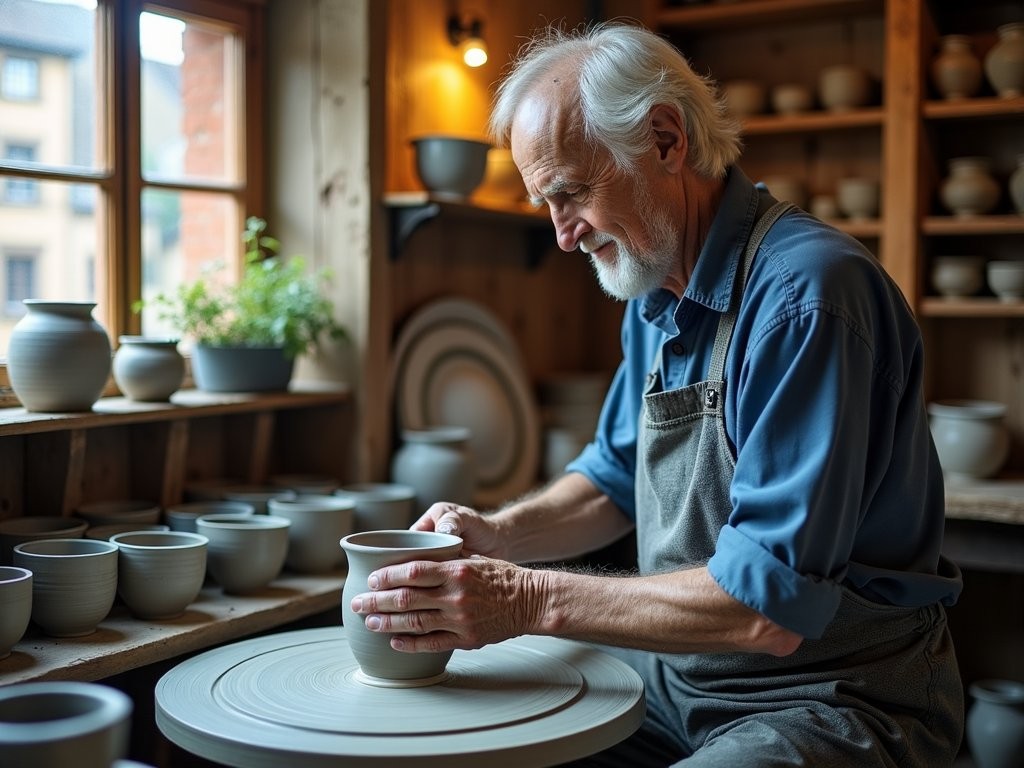
💡 Pro Tips
- Many artisans offer demonstrations of their craft—don't hesitate to ask when they might be working
- Shops in Petite France tend to open later (around 10:00) and close earlier than those in the city centre
- Bring cash for smaller workshops, as not all accept cards, particularly for smaller purchases
Christkindelsmärik: Europe's Oldest Christmas Market
No discussion of winter shopping in Strasbourg would be complete without exploring its legendary Christmas markets. Dating back to 1570, the Christkindelsmärik (Christ Child Market) is among Europe's oldest and most authentic. While many European cities now host Christmas markets, Strasbourg's retains a genuine connection to local traditions rather than merely catering to tourism.
The main market surrounds the magnificent Gothic cathedral, with its astronomical clock that has fascinated me since my first visit decades ago. Here, some 300 wooden chalets offer everything from hand-blown glass ornaments to artisanal foie gras. What distinguishes Strasbourg's market is the quality of craftsmanship—having appraised countless objects throughout my career, I can attest that many items sold here represent genuine artisanal skill rather than mass-produced trinkets.
I'm particularly fond of the wooden ornaments and nutcrackers crafted in nearby Black Forest workshops. These pieces follow traditions dating back generations, with techniques passed from master to apprentice. During my last December visit, I spent a pleasant hour chatting with Herr Schmidt, a third-generation woodcarver whose intricate nativity figures showed remarkable attention to detail. I couldn't resist purchasing one of his shepherds, which now joins my small but cherished collection of European folk art.
For those seeking edible souvenirs, the market offers abundant options. The bredele (small Alsatian Christmas biscuits) make delightful gifts, particularly when packaged in traditional tins. Each family has its own recipes, often jealously guarded, resulting in a remarkable variety of flavours and textures. My personal favourites are the anisbredele, delicately flavoured with green anise—they pair perfectly with a cup of Earl Grey tea on a winter afternoon.
Navigating the markets requires some strategy, particularly on weekends when they become quite crowded. I've found that arriving early (around 10:00) allows for a more relaxed experience. Additionally, the markets remain open into the evening, when the illuminations create a truly magical atmosphere. For capturing these enchanting evening scenes, my compact tripod has proven invaluable, allowing me to document the beautiful light displays without the blur that typically plagues handheld night photography.

💡 Pro Tips
- Visit on weekdays rather than weekends to avoid the largest crowds
- The Christmas markets typically run from late November through December 30th
- Bring cash in small denominations, as many stalls don't accept cards or large bills
Gourmet Delights: Edible Souvenirs from Alsace
My transition to plant-based eating following a health scare five years ago has hardly diminished my appreciation for Strasbourg's culinary offerings. In fact, it's enhanced my exploration of the city's remarkable food shops, where I've discovered a wealth of plant-derived delicacies.
The covered market, Marché Couvert de Strasbourg, housed in a striking 19th-century building near Petite France, serves as my first port of call for edible souvenirs. The structure itself merits architectural appreciation—its cast iron framework reminiscent of Parisian designs by Baltard—but it's the produce within that truly captivates. Local farmers present an impressive array of regional specialties, including the distinctive Alsatian mirabelle plums, transformed into exquisite preserves and eaux de vie.
For those who appreciate fine vinegars and oils, La Maison de la Moutarde et du Vinaigre offers an education in flavour. Their raspberry vinegar, produced using traditional methods, has become a staple in my kitchen back in El Paso. I use it to add bright acidity to salad dressings and roasted vegetables—a taste of Strasbourg that transports me back with each meal.
Alsace's wine tradition deserves special mention. The region's cool climate produces distinctive white wines characterized by remarkable minerality and aromatic complexity. While I once enjoyed these with the traditional choucroute garnie, I now pair them with plant-based adaptations featuring fermented cabbage, smoked tofu, and heirloom potatoes. Several wine shops along rue des Tonneliers offer shipping services, solving the perennial traveller's dilemma of transporting fragile bottles.
Perhaps most emblematic of Strasbourg's culinary heritage is pain d'épices—a honey-sweetened spice bread with medieval origins. At Le Pain d'Épices Mireille Oster, this humble loaf is elevated to an art form, with variations incorporating everything from orange zest to star anise. Their vegan versions, sweetened with apple compote rather than honey, prove that tradition and innovation can coexist beautifully. I routinely bring home several loaves, wrapping them carefully in my packing cubes which keep them protected during the journey back to Texas.
For chocolate enthusiasts, Christian's workshop near the cathedral creates bean-to-bar chocolates that rival anything I've tasted in Switzerland or Belgium. His single-origin dark chocolates, many naturally vegan, offer a fascinating education in terroir—the environmental factors that influence cacao's flavour profile. The elegant packaging makes these perfect gifts for discerning friends.

💡 Pro Tips
- Many shops offer vacuum sealing services for cheeses and charcuterie, making them suitable for international travel
- Purchase wine early in your visit and ask your hotel to store it until departure
- Most gourmet shops provide detailed information about shelf life—ask if you're concerned about transport time
Contemporary Design: Strasbourg's Modern Creative Scene
While Strasbourg's medieval heritage rightfully commands attention, the city also nurtures a vibrant contemporary design scene that often escapes notice. As someone who has documented the evolution of European decorative arts across centuries, I find this juxtaposition of old and new particularly fascinating.
The area surrounding Place Saint-Étienne has emerged as a hub for modern design boutiques. Here, a new generation of Alsatian designers creates pieces that reference regional traditions while embracing contemporary aesthetics. At Hopla Design, I discovered elegant ceramics that echo traditional Alsatian forms but feature minimalist glazes and clean lines that would complement any modern interior. The proprietor, Mathilde, explained how her work responds to historical Alsatian pottery while creating something distinctly of our time—exactly the kind of cultural dialogue that has always fascinated me in my appraisal work.
For those interested in sustainable fashion, several boutiques around rue de la Mésange showcase independent designers working with eco-conscious materials and ethical production methods. Having embraced more sustainable lifestyle choices in recent years, I appreciate these thoughtfully created garments that stand apart from fast fashion's disposable ethos. At Éthique et Toque, I purchased a beautifully crafted linen shirt made from flax grown and processed in Normandy—the sort of garment that improves with age rather than quickly deteriorating.
Book lovers should not miss Quai des Brumes, an independent bookshop with an outstanding selection of art and design publications, many unavailable elsewhere. Their carefully curated collection includes several volumes on Alsatian design heritage that proved invaluable additions to my reference library. The knowledgeable staff directed me to a fascinating monograph on Alsatian furniture design that contextualizes contemporary work within the region's rich woodworking tradition.
For those seeking distinctive home accessories, Le Salon de Thé et Boutique des Deux Rives offers ceramics, textiles, and glassware created by local artisans. Their collection of handblown glass, produced in a small workshop in the Vosges mountains, particularly caught my eye. The delicate vessels, with their subtle blue-green hues reminiscent of the Rhine River, now occupy a cherished place in my El Paso home—a daily reminder of Strasbourg's creative spirit.
To document these discoveries and the inspiration they provide, I rely on my digital camera, which balances professional image quality with portability. Its ability to capture accurate colors proves particularly valuable when photographing textiles and ceramics, allowing me to reference these inspirations long after returning home.
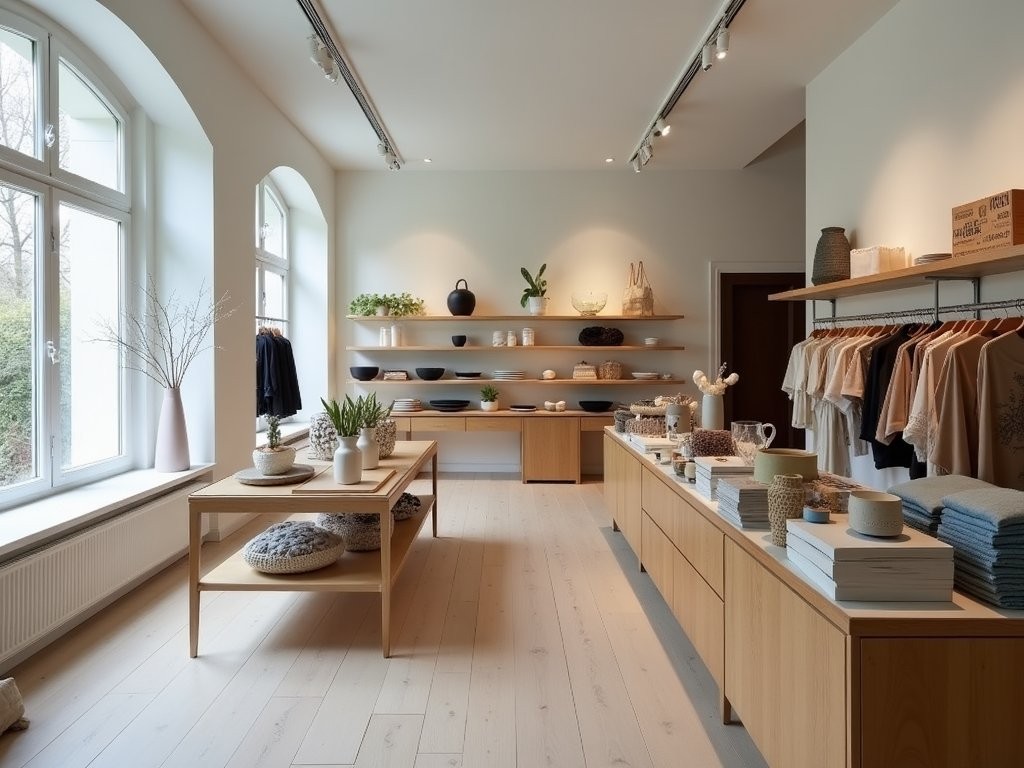
💡 Pro Tips
- Many design shops are closed on Mondays, so plan accordingly
- Ask about the designers' backgrounds—many have fascinating stories that enhance appreciation of their work
- Several boutiques offer shipping services for larger items, solving potential luggage constraints
Final Thoughts
As I pack my treasures for the journey home—carefully nestling fragile ceramics between layers of clothing, securing bottles of Alsatian Riesling in protective sleeves—I reflect on Strasbourg's remarkable duality. Few European cities so successfully balance reverence for tradition with embrace of innovation. The same hands that craft pain d'épices according to medieval recipes are designing sustainable fashion for the 21st century. This cultural continuity, this dialogue between past and present, makes Strasbourg's shopping scene uniquely rewarding for the discerning visitor. Whether you seek the perfect Christmas ornament from Europe's oldest yuletide market or contemporary designs from the region's emerging creative talents, Strasbourg offers treasures that transcend mere souvenirs to become cherished mementos of your Alsatian adventure. I encourage you to explore beyond the obvious, to engage with artisans and shopkeepers, to ask questions and learn stories. For in Strasbourg, every purchase carries with it centuries of cultural heritage—a tangible connection to this remarkable region where French elegance and Germanic precision have created something altogether extraordinary.
✨ Key Takeaways
- Strasbourg offers shopping experiences ranging from centuries-old Christmas markets to cutting-edge design boutiques
- The Grande Île and Petite France districts provide distinct shopping experiences—luxury brands in the former, artisanal crafts in the latter
- Edible souvenirs like pain d'épices and Alsatian wines make perfect gifts that capture the region's unique culinary heritage
📋 Practical Information
Best Time to Visit
November-December for Christmas markets; year-round for other shopping
Budget Estimate
€500-1000 per couple for a weekend of luxury shopping experiences
Recommended Duration
2-3 days
Difficulty Level
Easy

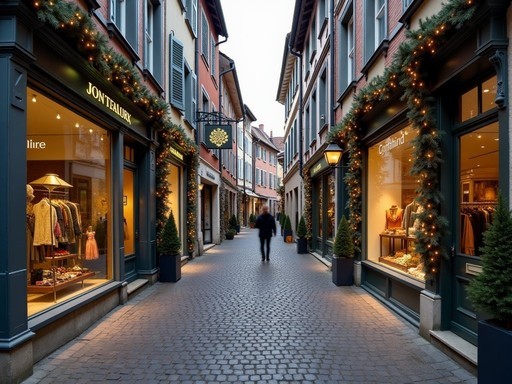
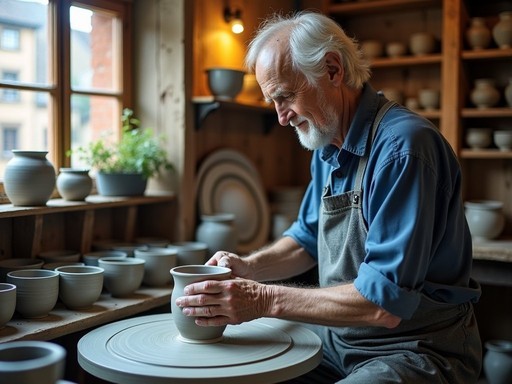

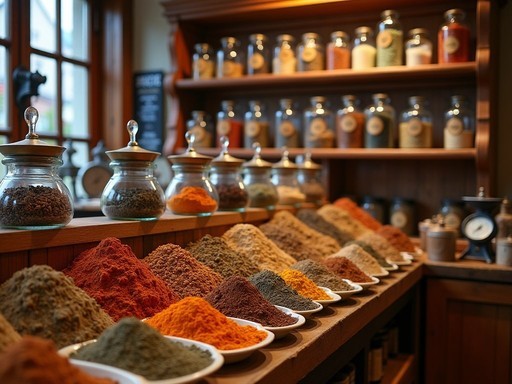




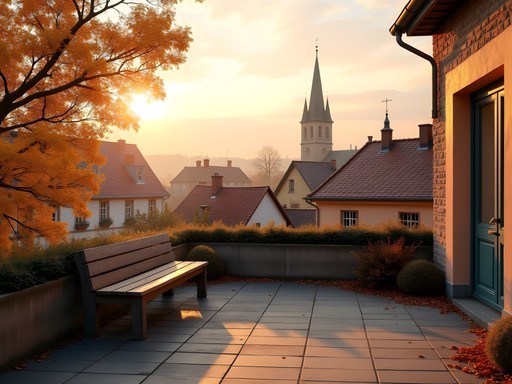
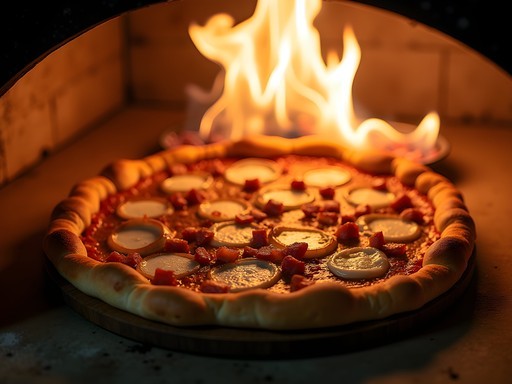
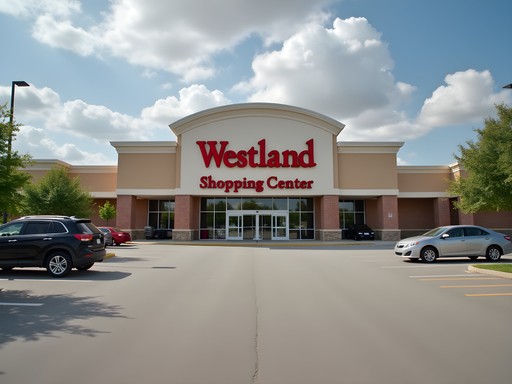


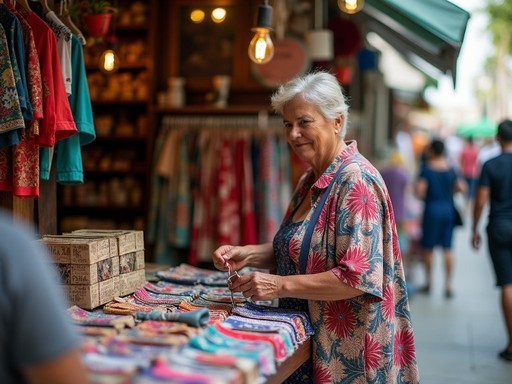
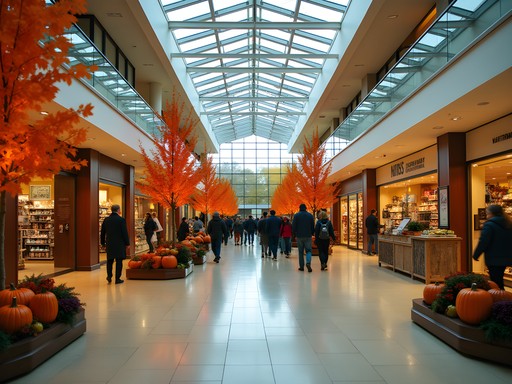
Comments
Sage Dixon
John, this guide is exactly what I needed before my trip next month! After reading your post, I've added Petite France to my must-visit list. For anyone else planning a trip, I'd add that the antique book shops around the cathedral are incredible too. On my last visit, I found a 19th-century map of Alsace that now hangs in my office. One tip for serious shoppers: many boutiques close for lunch (usually 12-2pm), so plan accordingly. Also, if you're visiting multiple shops, bring a fold-up tote bag - those little purchases add up quickly, and Strasbourg is very eco-conscious about plastic bags.
moonblogger
Thanks for the lunch break tip! Would have totally forgotten about that.
greenguy
Those wine shops in the article are spot on. Brought home three bottles of Riesling!
backpackmaster
Going to Strasbourg next month! Any recommendations for affordable souvenirs that aren't too bulky for a backpacker? Those gourmet delights sound amazing but I'm on a tight budget.
vacationlife2123
Try the local jams and honey! Small jars pack well and make great gifts. The pain d'épices (spice bread) is also delicious and stays fresh for a while!
Casey Andersson
I'd recommend picking up some Alsatian tea blends from Palais des Thés - lightweight, affordable, and uniquely local. Also, the small hand-painted Christmas ornaments fold flat in luggage and make wonderful mementos. I use my packing cubes to keep fragile souvenirs safe without taking up too much space!
backpackmaster
Thanks for the tips! Tea sounds perfect - I'll definitely check out those shops!
Casey Andersson
John, your description of Strasbourg's shopping scene is spot on! I spent a luxurious weekend there last spring and fell in love with the boutiques on rue des Orfèvres. Found the most exquisite handmade leather journal that I now use for all my travel notes. The shop owner told me his family has been crafting them for generations! Also, for anyone planning a visit, I'd add Galeries Lafayette to your list - the Strasbourg location has a wonderful selection of local Alsatian products alongside the luxury brands. I picked up some gorgeous Lalique crystal there that reminds me of Strasbourg every time I see it catch the light in my Wellington apartment.
vacationlife2123
I visited Strasbourg's Christmas market last December and it was magical! The wooden ornaments and gingerbread were exactly as John described - impossible to resist. Spent way too much on handcrafted ceramics in Petite France too, but they're now my favorite kitchen pieces. The mulled wine kept me warm while browsing all those stalls!
Casey Andersson
The Christmas market is absolutely enchanting, isn't it? I actually planned my entire European winter tour around it last year. Did you try the bretzel sandwiches? Divine!
vacationlife2123
Yes! Those bretzel sandwiches were amazing. I also loved the flammekueche from the little stands. So good on a cold day!
starguy
LOVE THIS POST!!! Strasbourg has the BEST shopping in eastern France! Don't forget to check out the chocolate shops too - we bought so many boxes of those little Alsatian chocolates shaped like the cathedral that our suitcase was overweight on the flight home! 🍫🛍️✨
Sophia Gomez
I was in Strasbourg for a business conference last winter and managed to escape for an afternoon of shopping. The Christmas market was magical! I found the most beautiful hand-carved ornaments at a stall run by a family who's been making them for generations. They carefully wrapped each one in paper printed with the story of their workshop. I keep my travel journal with notes about where I found each treasure - the ornaments came from a blue stall near the cathedral's south entrance. John, your descriptions perfectly capture the charm of shopping in this city. Did you have a favorite vendor at the market?
John Clark
Thank you, Sophia! My favorite vendor was definitely the glassblower near Place Kléber - watching him create those delicate ornaments was mesmerizing. I'm glad you enjoyed the markets as well!
explorelover9292
Just returned from Strasbourg last month and this guide would have been so helpful! For anyone going, don't miss Galeries Lafayette on rue du 22 Novembre - it's smaller than the Paris store but has a great selection of French brands. Also, the cheese shops around the cathedral are incredible. We bought some Munster to bring home and even properly wrapped, it made everything in our suitcase smell for days! Worth it though. The ceramic shops John mentioned in Petite France are definitely the highlight - each piece feels like taking home a bit of Alsatian history.
moonblogger
Any recommendations for getting around the shopping districts? Is it walkable or should we plan on using public transit?
greenguy
We walked everywhere! The Grande Île and Petite France are super close to each other and it's the best way to discover hidden shops.
photolegend
Those ceramic shops in Petite France are amazing! Brought home three mugs last year.
Venture X
Premium card with 2X miles, $300 travel credit, Priority Pass